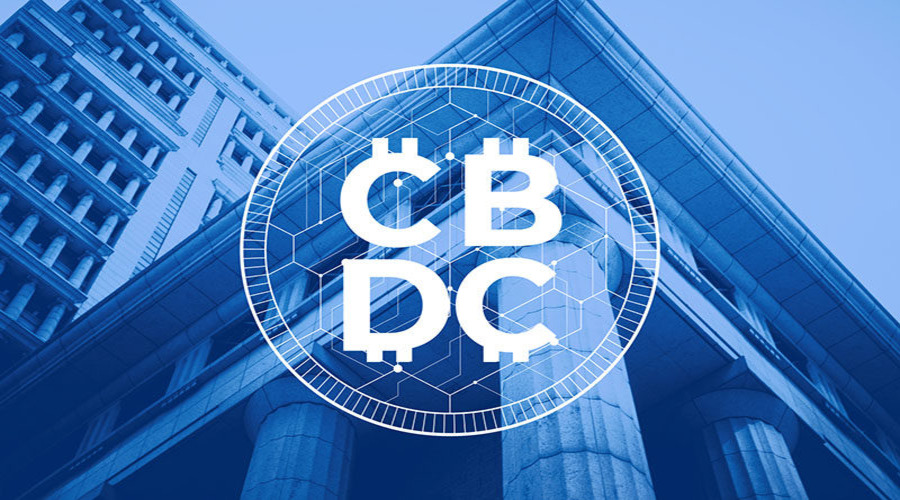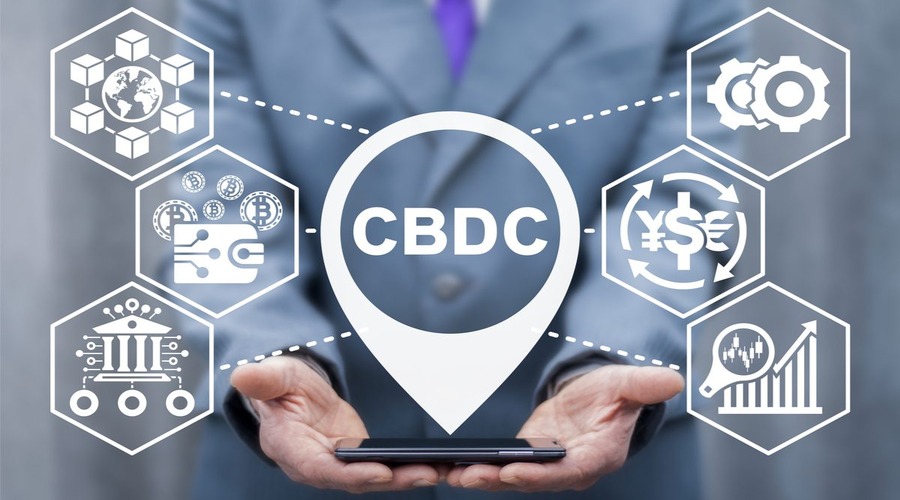Exploring Cold Storage Solutions for Central Bank Digital Currencies (CBDCs)

Exploring Cold Storage Solutions for Central Bank Digital Currencies (CBDCs)
Central Bank Digital Currencies (CBDCs) have emerged as a potential game-changer in the world of finance. These digital currencies, issued and regulated central banks, offer several advantages such as increased efficiency, transparency, and reduced costs in monetary transactions. As CBDCs gain traction, it becomes crucial to explore secure storage solutions to safeguard these digital assets. In this article, we will delve into the concept of cold storage solutions for CBDCs and their significance in ensuring the safety and integrity of digital currencies.
Introduction
With the rise of CBDCs, central banks are faced with the responsibility of protecting these digital assets from unauthorized access, theft, or loss. Cold storage solutions provide an effective means to achieve this goal keeping the private keys associated with CBDCs offline, away from potential cyber threats. In this article, we will explore the various cold storage options available for central banks to secure their CBDCs.
What are Central Bank Digital Currencies (CBDCs)?
Central Bank Digital Currencies (CBDCs) are digital forms of fiat money issued central banks. Unlike traditional cryptocurrencies such as Bitcoin or Ethereum, CBDCs are regulated and controlled central authorities. They aim to combine the benefits of digital currencies, such as faster transactions and reduced costs, with the stability and trust associated with government-backed fiat currencies.
The Need for Cold Storage Solutions
As CBDCs operate in a digital environment, they are susceptible to cyber threats, hacking attempts, and unauthorized access. Cold storage solutions address these risks storing the private keys used to access and authorize CBDC transactions offline, disconnected from the internet. By keeping the keys offline, the chances of unauthorized access or theft are significantly reduced.
Understanding Cold Storage
Cold storage refers to the practice of storing digital assets, such as private keys or passwords, in an offline or air-gapped environment. By utilizing cold storage, central banks can protect their CBDCs from potential online attacks, malware, or hacking attempts. Cold storage ensures that the private keys remain secure and inaccessible to unauthorized individuals or malicious actors.
Types of Cold Storage Solutions
Hardware Wallets
Hardware wallets are physical devices specifically designed to store private keys securely. These devices generate and store the private keys offline, providing an extra layer of protection against online threats. Hardware wallets are resistant to malware and hacking attempts and often require physical confirmation for transactions, adding an additional security barrier.
Paper Wallets
Paper wallets involve generating a pair of public and private keys and printing them on a physical piece of paper. Since the keys are not stored digitally, paper wallets offer enhanced security against online threats. However, caution must be exercised to prevent physical damage or loss of the paper wallet, as it can lead to permanent loss of access to the CBDCs.
Offline Computers and Air-Gapped Systems
Offline computers or air-gapped systems are isolated from any network connection, including the internet. These systems are used to generate and store private keys securely. By maintaining a physical barrier between the CBDC network and the offline computer, central banks can significantly reduce the risk of unauthorized access or cyberattacks.
Multi-Signature Wallets
Multi-signature wallets require multiple authorized signatures to authorize transactions. In the context of CBDCs, central banks can implement multi-signature wallets where multiple individuals or entities need to provide their consent for any CBDC transaction to be executed. This ensures a higher level of security and reduces the risk of a single point of failure.

Security Considerations for CBDC Cold Storage
When implementing cold storage solutions for CBDCs, central banks must consider several security aspects to ensure the protection of digital assets.
Physical Security
Physical security measures are crucial to protect the offline storage devices or systems. Central banks need to establish secure vaults or storage facilities with restricted access to safeguard the hardware wallets, paper wallets, or offline computers containing the private keys.
Encryption and Authentication
Encryption plays a vital role in securing the private keys associated with CBDCs. Central banks should utilize robust encryption algorithms to protect the keys from unauthorized access. Additionally, implementing strong authentication mechanisms, such as multi-factor authentication, further enhances the security of cold storage solutions.
Regular Auditing and Monitoring
Continuous monitoring and auditing of the cold storage infrastructure are essential to identify any potential vulnerabilities or breaches. Central banks should establish comprehensive monitoring systems that provide real-time alerts in case of any suspicious activities or attempts to access the offline storage devices.
Best Practices for Implementing CBDC Cold Storage Solutions
To ensure the effectiveness of CBDC cold storage solutions, central banks should follow best practices in their implementation.
Key Generation and Storage
Central banks must utilize secure methods for key generation, ensuring randomness and unpredictability. The generated keys should be securely stored in the chosen cold storage solution, following established encryption and access control practices. Key generation and storage are crucial aspects of implementing secure cold storage solutions for Central Bank Digital Currencies (CBDCs). It is essential to employ robust methods for generating unique and unpredictable keys. These keys should then be securely stored in the chosen cold storage solution, following industry best practices for encryption and access control. Proper key generation and storage are fundamental to maintaining the integrity and security of CBDCs.
Access Control and Authorization
Implementing strict access control mechanisms is crucial to prevent unauthorized individuals from gaining access to the cold storage devices or systems. Central banks should define roles and responsibilities and enforce strong authentication protocols to regulate access to the CBDC cold storage infrastructure. Implementing strict access control and authorization protocols is vital for ensuring the security of Central Bank Digital Currencies (CBDCs) in cold storage. Central banks must define roles and responsibilities, enforce strong authentication mechanisms, and regulate access to the cold storage infrastructure. By implementing effective access control measures, central banks can prevent unauthorized individuals from gaining access to the CBDCs and mitigate the risk of insider threats. Robust access control and authorization practices are essential for maintaining the integrity and confidentiality of CBDCs.
Disaster Recovery Planning
In the event of physical damage or loss of cold storage devices, central banks must have robust disaster recovery plans in place. Regular backups, redundant systems, and contingency measures can help mitigate the risk of permanent loss of access to CBDCs. Disaster recovery planning is a critical component of cold storage solutions for Central Bank Digital Currencies (CBDCs). Central banks must have comprehensive plans in place to mitigate the risk of physical damage or loss of cold storage devices. Regular backups, redundant systems, and contingency measures should be implemented to ensure the availability and recoverability of CBDCs in the event of a disaster. A well-defined disaster recovery plan helps central banks minimize downtime and maintain the integrity and accessibility of CBDCs.
Challenges and Risks Associated with CBDC Cold Storage
While cold storage solutions offer enhanced security for CBDCs, certain challenges and risks need to be addressed.
- Insider Threats
Central banks must be cautious about insider threats, where individuals with authorized access may attempt to compromise the security of CBDCs. Implementing strict access controls, regular audits, and monitoring mechanisms can help mitigate this risk.
- Technical Vulnerabilities
As technology evolves, new vulnerabilities and exploits may emerge. Central banks need to stay updated with the latest security practices and conduct periodic security assessments to identify and address any technical vulnerabilities in their cold storage solutions.
- Regulatory Compliance
Central banks must ensure that their CBDC cold storage solutions comply with relevant regulations and legal frameworks. Compliance with data protection laws, financial regulations, and industry standards is essential to maintain the integrity and legality of CBDC operations.
Future Trends in CBDC Cold Storage Solutions
As the adoption of CBDCs increases, advancements in cold storage solutions are likely to emerge. Central banks may explore technologies such as secure enclaves, hardware-based security modules, and decentralized storage mechanisms to further enhance the security and resilience of CBDC cold storage.
Conclusion
As central banks venture into the realm of CBDCs, it becomes imperative to establish robust and secure cold storage solutions. By implementing hardware wallets, paper wallets, offline computers, or multi-signature wallets, central banks can safeguard their CBDCs from cyber threats and unauthorized access. However, it is crucial to consider security considerations, best practices, and address the challenges and risks associated with CBDC cold storage. As technology evolves, future trends in cold storage solutions will continue to shape the landscape of secure storage for CBDCs.
FAQs
- What is the purpose of cold storage for CBDCs? Cold storage ensures the offline and secure storage of private keys associated with CBDCs, protecting them from online threats and unauthorized access.
- Are hardware wallets the most secure cold storage solution for CBDCs? Hardware wallets are considered one of the most secure options for CBDC cold storage due to their physical isolation and resistance to malware.
- Can paper wallets be damaged or lost? Yes, paper wallets can be physically damaged or lost, leading to the permanent loss of access to CBDCs. Proper precautions must be taken to protect and store paper wallets securely.
- What are multi-signature wallets? Multi-signature wallets require multiple authorized signatures to authorize CBDC transactions. They enhance security reducing the risk of a single point of failure.
- What are the future trends in CBDC cold storage? Future trends may include technologies like secure enclaves, hardware-based security modules, and decentralized storage mechanisms to further enhance the security of CBDC cold storage.
I’ve been involved with cryptocurrency for three years. I have been a vocal advocate for the people and an active part of the community. I am well-known for my book “Crypto Revolution: An Insider’s Guide to the Future of Money” and blog “The Crypto Chronicles.” In addition, I frequently contribute to CoinDesk, one of the top news websites for cryptocurrencies. I write as well as invest actively in a number of bitcoin initiatives.
